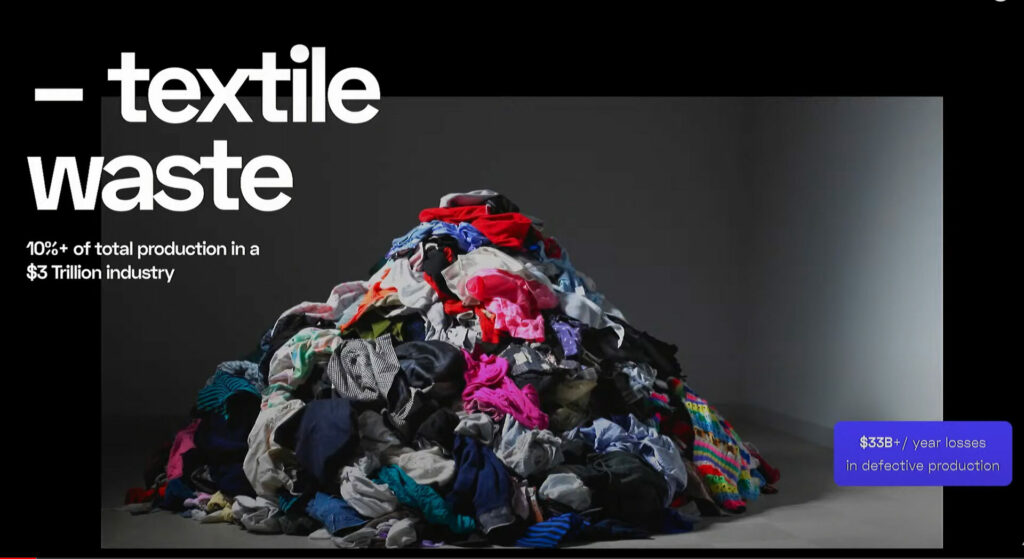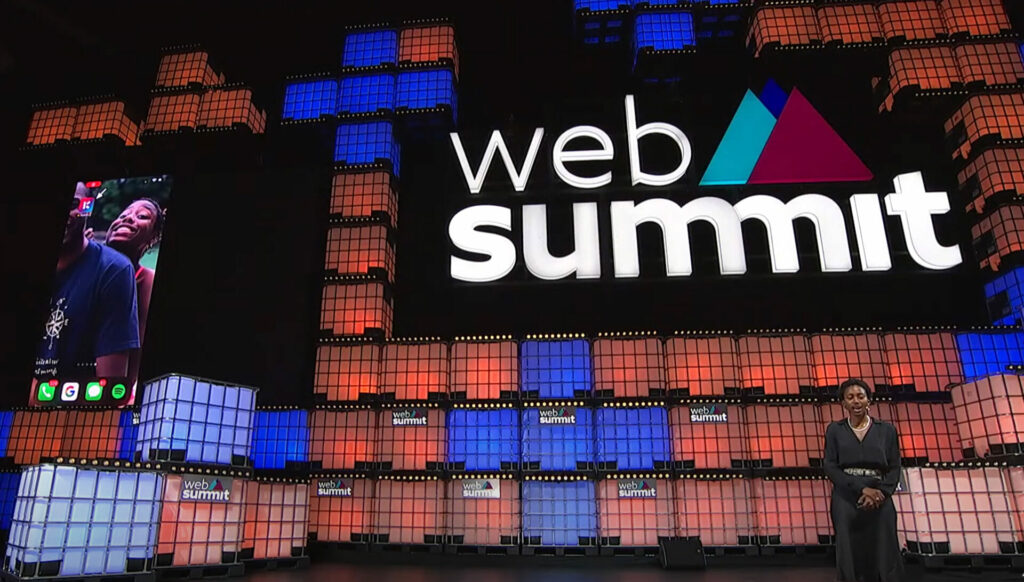
Web Summit is arguably one of the largest tech events in the world. That’s why when the “breakout startups” took the stage last month to pitch in front of thousands of participants at the in-person edition of the flagship conference in Lisbon, everyone took notice.
There’re no denying that all the ideas were brilliant and relevant to the ever-evolving digital age we’re living in, but not all the entrepreneurs succeeded in making the best of the unique opportunity they had.
Before getting into what the presenting founders—who were from different countries—got right and wrong on stage, it’s important to note that speaking before a large audience, especially after a jet lag experience, is no easy feat.
Nevertheless, we can all improve our skills, and this article aims to provide some tips about how to give more effective presentations based on the pitches delivered during Web Summit.
Greet the audience unless you have a killer intro up your sleeve.
Consider greeting the audience to get their attention and show your respect for their attention unless you plan to start your presentation with a very interesting question or story and are sure that a greeting would take away from its impact.
Start with the problem.
Startups are all about solving problems. So it makes sense that you start your presentation with the problem you’re trying to solve. Relevant statistics about the problem in question can make your message more powerful.
Be vulnerable and authentic.
American author Mark Manson argues that there’s “power in vulnerability” and defines it as “consciously choosing to not hide your emotions or desires from others.”
Many of the presenting founders on the Web Summit stage were clearly nervous. But none of them acknowledged they were stressed, even when they forgot their lines.
This only created a distraction and an awkward moment for themselves and the audience, whereas the attendees would’ve shown empathy for them—by clapping for example—if they had admitted they were nervous.
The pause would’ve probably allowed them time to take a breath, calm their nerves, and deliver the rest of the presentation with clarity and focus.
People like authenticity more than anything else. Expressing how you’re feeling—excited, nervous, happy, grateful, etc.—in a healthy, professional way makes you look genuine, and people can’t help but listen to what an authentic speaker has to say.
Authenticity is also reflected in the way you talk or the words you choose. If you always speak fast, you don’t need to slow down your speech in an unnatural manner. Similarly, you don’t have to include technical-sounding words in your presentation that you’ve never used for the sake of impressing the audience.
Just be yourself.
Tell the story behind the name of your company.
Most of the startups who pitched at Web Summit had chosen very catchy, unique names for their businesses. However, none of them explained the story behind the name of their company, missing a chance to make their brand stick in the minds of the listeners.
Tell the story that inspired you to launch your company.
Sharing the story that inspired you to launch your business can add personal touch to your presentation and makes it more impactful, relatable, and interesting.
Engage the audience by asking questions.
Questions like “How many of you have experienced…?” are a great way to engage the audience, either at the beginning of or during the presentation. So ask questions and tell the audience to answer by a show of hands to capture their attention.

Make the presentation about your company, not yourself.
It’s a great quality to be able to talk proudly about yourself and your achievements. But it becomes problematic when you make the presentation more about yourself than your company. Try to find the right balance.
Master your body language.
According to the 7-38-55 rule proposed by body language expert Albert Mehrabian, 55% of a message is communicated through body language, 38% through tone of voice, and only 7% through the actual words spoken.
So it’s really important that you learn how to best use body language to increase the effectiveness of your message.
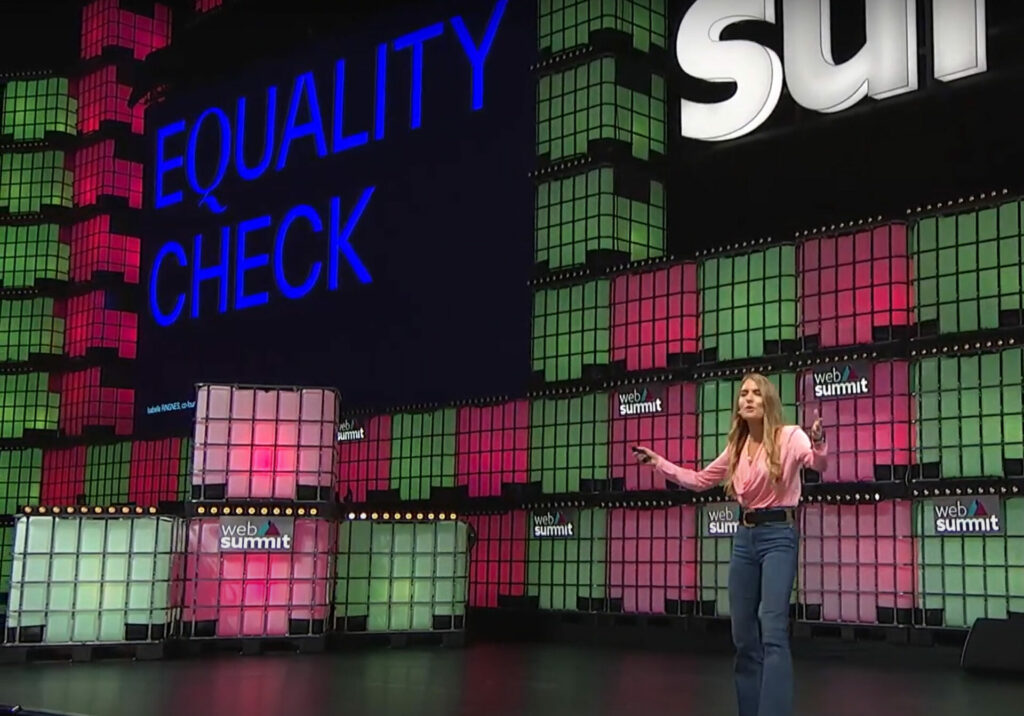
Don’t talk too fast.
It’s okay to talk fast if you naturally tend to do so. But if you find yourself talking more quickly than usual on stage, it’s better to slow down to avoid making mistakes and make it easier for the audience to follow your words.
Go for a conversational and informal tone.
Being too formal while presenting puts the listeners off because they’ll find your speech unnatural. So try to speak in an informal tone to make yourself and your company look more relatable and approachable.
Take advantage of presentation tools.
Some of the pitching entrepreneurs had not prepared any proper PowerPoint presentation. While it’s not good to over-rely on presentation tools, it’s a good idea to use a few slides to add variety to your presentation and reinforce your message.
Don’t use too many slides.
Including too many slides in your presentation will only distract you and your audience. So use just enough number of slides and make sure that only relevant texts and images are included. Weed out the information that are only good for internal meetings.
Keep it short.
If you have five minutes to pitch, you don’t necessarily have to make your presentation five-minute-long. It’s okay to make it shorter if you think your message can be communicated efficiently.
Don’t use too much text on your presentation slides.
Most people can’t handle too much text on your presentation slides. Use bullet points to summarize and highlight important data.
And remember that your presentation should not serve as a teleprompter. Also, don’t use too many animation effects as it’ll distract the listeners from the message.
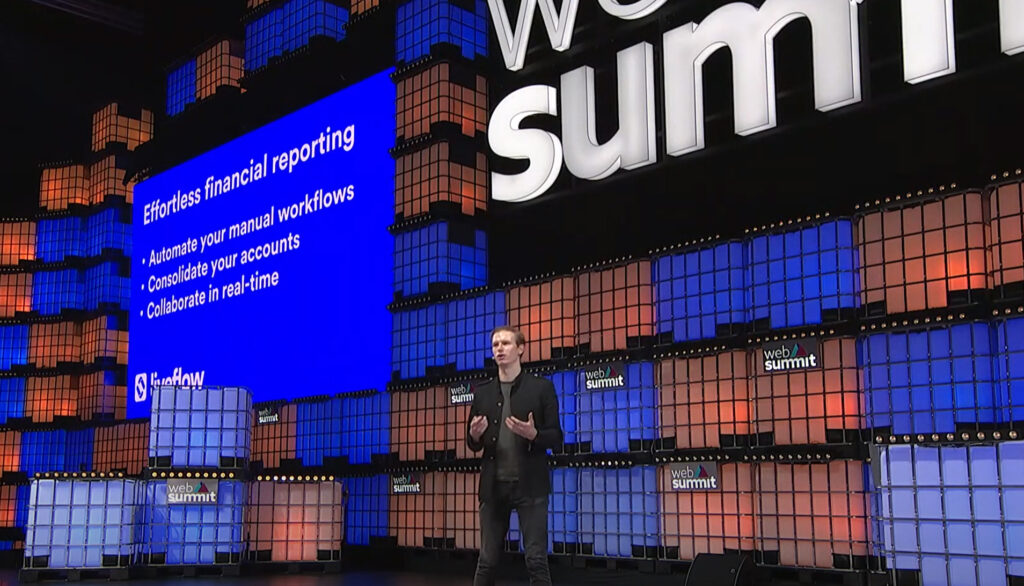
Don’t over-rely on the teleprompter.
A large number of the pitching founders were reading off the teleprompter, which made them look as if they were talking to the screen rather than the audience.
Remember that eye contact is very important when giving a presentation because the attendees can feel it’s missing even if they are sitting far from you. In most cases, they can easily see where you’re looking on the multiple screens available in the arena.
No matter how hard you try to sound natural when reading from the teleprompter, you cannot fool the audience because there are many other clues that could give you away.
For instance, reading off the teleprompter usually restricts your movement because you have to stay right in front of the screen and stay super focused on the texts being displayed.
It’s okay to use the teleprompter to remember the key points you’d like to mention, but the point is that over-reliance on it can make you look unprofessional.
And, more importantly, how can you be a trustworthy partner for anyone if you can’t talk about your company for a few minutes without the help of a pre-prepared speech? What will happen if the power goes out and you can’t use the teleprompter for the rest of your presentation?
Show, don’t tell.
It was wise of many founders to include slides in their presentations that showed their app in action.
However, some startups didn’t use the opportunity, which was a shame because it could’ve taken their speech to a whole new level.
Get the font size right.
At large events like Web Summit, the audience usually sit at a distance from the main screen. So it’s important that you make the texts on your slides large enough for the participants to see them easily.
Put your logo on every slide.
Some observers may argue against putting the name and logo of your company on all slides. But it could prove helpful at big events such as Web Summit where people get easily distracted and may miss the initial slides or new attendees are likely to join the event in the middle or at the end of a presentation.
Keep it simple.
Including too many statistics in your presentation makes you more prone to mistakes. Choose only the major statistics that helps you make your point. This makes it easier to remember your lines and helps reduce the need to use the teleprompter.
It’s okay to use notes.
It’s acceptable to bring your notes with you to the pitch session, especially if it can help you use the teleprompter less and make better eye contact with the audience. But try not to be tied to them.
Improvise.
Be ready to improvise when your presentation doesn’t go as planned because of a technical problem or a similar issue or when you forget your lines.
Don’t insist on saying the exact words you had in mind before getting on stage. It’ll only make you feel more stressed and will distract you and the audience.
Tailor your presentation to the event.
One of the best ways to get the undivided attention of the audience is to tailor your presentation to the event.
For instance, João Vieira da Costa, founder and CEO at Replai.io did something really interesting on stage to demonstrate their video-based creative insights platform that’s powered by artificial intelligence and machine vision.
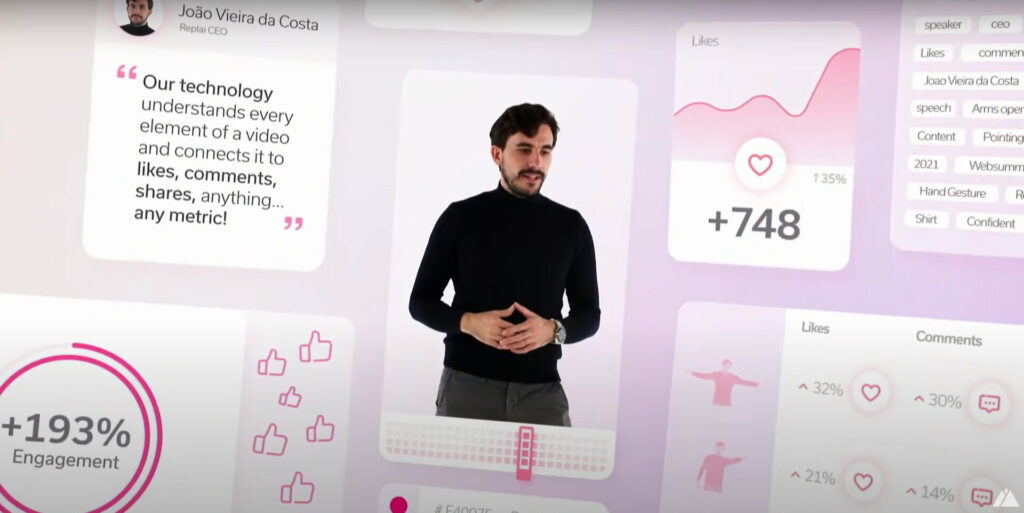
“I’m gonna stop talking, and I’m gonna start showing,” he said, after explaining how their solution add value to users.
“This very speech that I’m doing is being recorded by the camera over there, and we’ve connected Replai [to it] in real time,” he added and continued to show how their platform analyzed his presentation based on various metrics.
It was a great example of making the participants truly understand how a solution works, with its impact being much more powerful than a pre-recorded video.
Another good example of a customized presentation is the speech of Sara F. Marquart, co-founder and chief technology officer at QOA.
Her company has developed the “world’s first 100% cocoa-free chocolate”, and she asked the audience to send an empty mail to their email address to receive a test kit.
Many audience members took out their phone right away to use the opportunity, which meant they were going to remember QOA even after the summit.
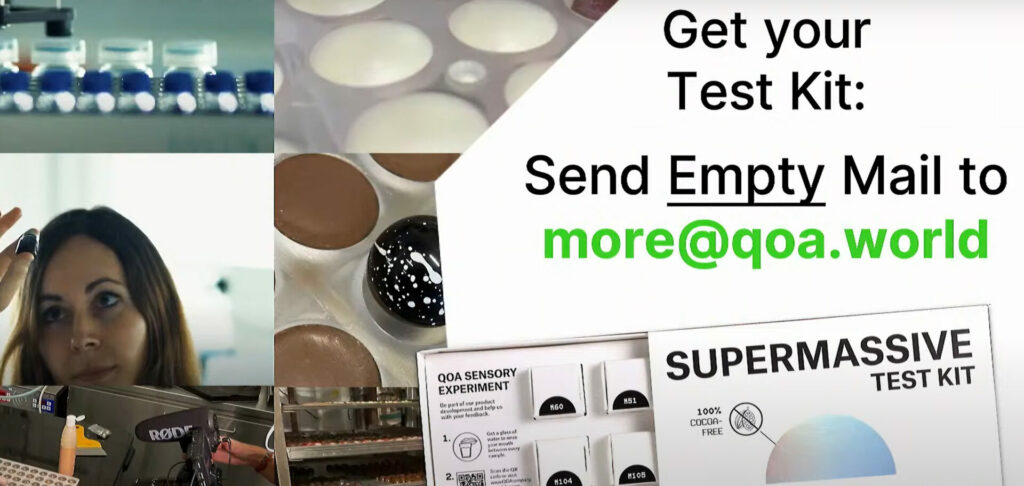
Don’t include common sense information.
People are obviously getting tired of hearing that the future of work is remote or the coronavirus-induced digital transformation is changing everything. So instead of including common sense information, use the time you have to focus on what makes your solution unique.
Choose your outfit wisely.
It was really interesting to see people in both casual and formal outfit on stage. However, Abel Mengistu, co-founder at FlutterFlow, an online low-code builder for native mobile apps, and Julio Martínez, co-founder and CEO at Abacum, collaborative financial planning and analysis software for tech finance teams, were standouts as they had respectively chosen to wear a T-shirt and a hoodie branded with their company’s logo.
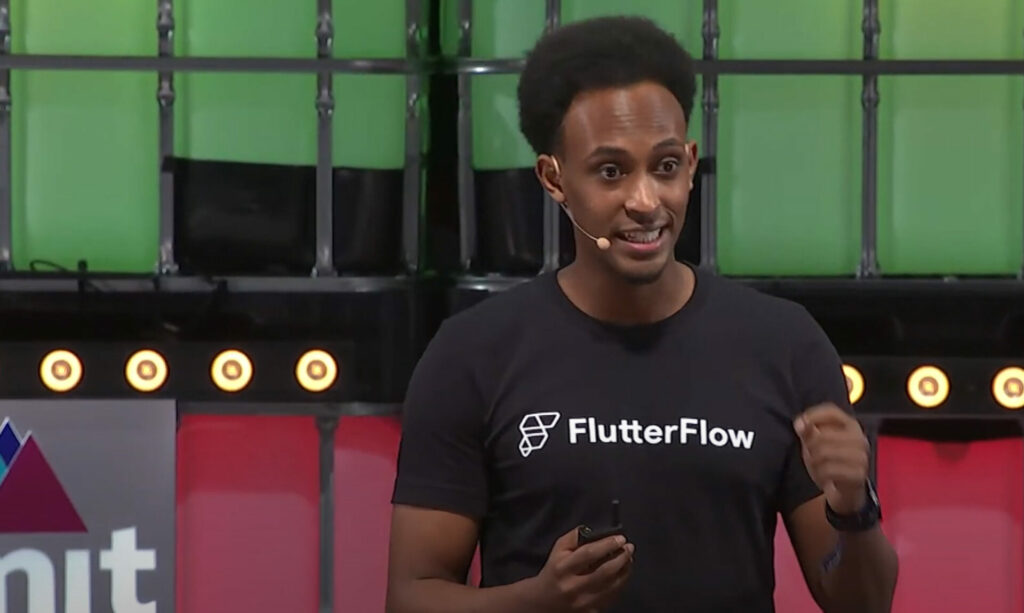
Overall, what’s important is that you wear a dress you feel comfortable in instead of going for an outfit that doesn’t suit your personality.
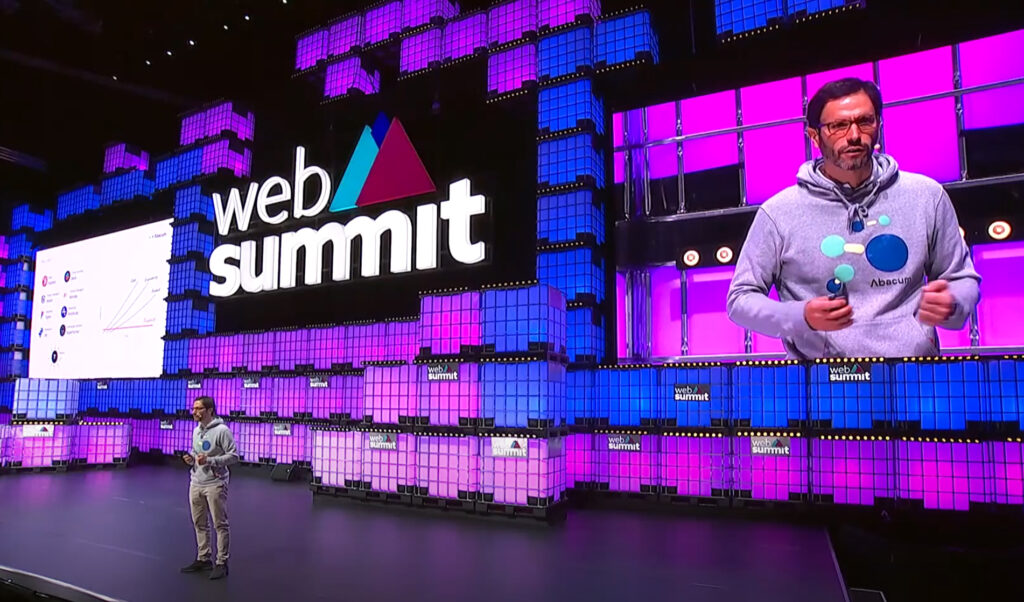
Be loud and clear.
You should speak loud enough so the person farthest from you can hear you easily. Consider the importance of your voice and make sure you’re not speaking in a monotone.
Use the stage effectively.
Keep the audience awake with your movement on stage. Your presentation shouldn’t be limited to one spot. That’s why it’s advisable to not over-rely on the teleprompter.
However, beware that too much back and forth could make you appear uncomfortable and nervous.
Smile.
Don’t forget to smile during your presentation as it’ll help you leave a great impression on the audience. But don’t force it. Learning to smile while talking—and of course when appropriate—is a matter of training.
Use images in your presentation effectively.
Bring your presentation to life with photos that align with your message. Don’t use very small images that require the audience to carry binoculars.

Use real images instead of clip art images.
Natural and real images are usually preferred to clip art ones because of the human touch inherent in them.
Practice, practice, practice.
Practicing your presentation in advance not only helps you feel more confident but also shows your respect for the listeners. So put the right amount of time and energy into preparing your speech.
Ask for the help of a more eloquent team member if necessary.
As a founder, you’re expected to be good at presenting your business. However, if you believe you’re not in the best mood to give a presentation on a large stage like Web Summit, ask another member of your team who is more prepared to do it in your place—if the rules allow.
Share your contact information in the final slide.
It’s an effective practice to let the audience know how they can get in touch with you if they’re interested in knowing more about you and your startup. So considering sharing your contact information in the final slide of your presentation.
End your presentation with a call to action.
Consider ending your presentation with a call to action. For instance, some of the presenting founders told the audience they’ll be waiting for them at their booth at the startup exhibition or asked them to find them using the Web Summit app. Some of them asked the participants to visit their website.
Thank the audience for listening.
It’s only respectful to thank the audience for their time at the end of your presentation instead of rushing off the stage.

Best pitch at Web Summit
Finally, our vote for the best pitch at Web Summit goes to Isabelle Kristine Ringnes, co-founder at Equality Check, a platform for anonymous, crowdsourced reviews about equality in the workplace.
Her presentation ticked almost all the boxes and could set a good example for founders who want to deliver more memorable, engaging, and impactful presentations.

